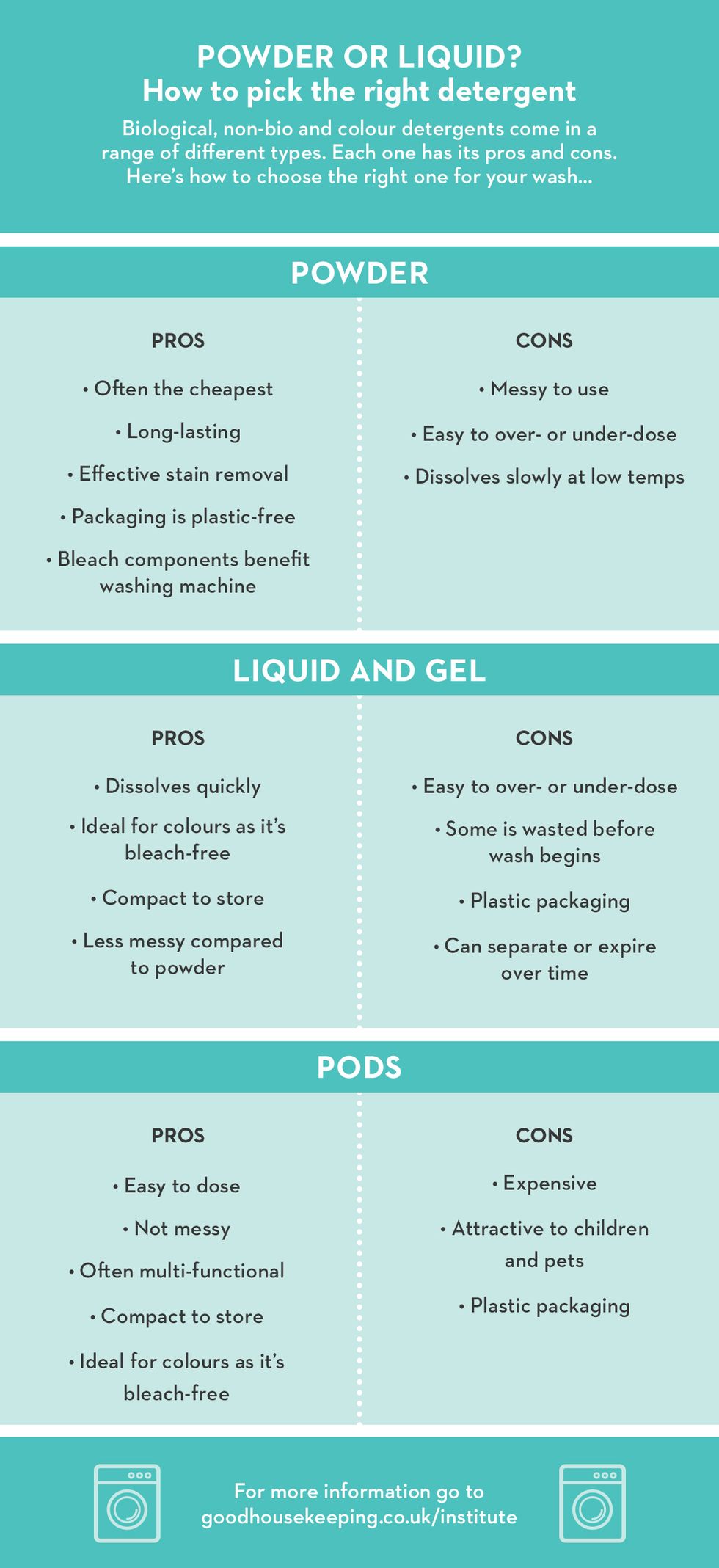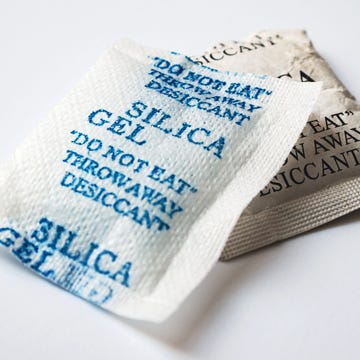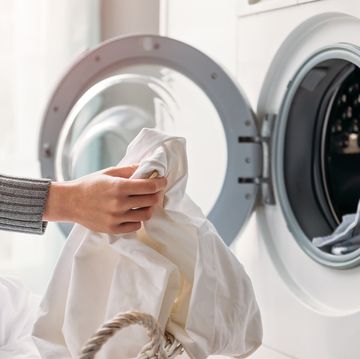Choosing the best laundry detergent isn’t one-size-fits-all. While powerful cleaning is key, what matters most depends on what you’re washing, skin sensitivity and your budget. And for most of us, simply convenience is at the top of our wish-list when it comes to laundry products.
So, are you using the best detergent for your laundry? The Good Housekeeping Institute (GHI) has outlined the pros and cons of each detergent type – so you can choose what fits your lifestyle best. Maybe it’s time to change things up?
What type of laundry detergent does what?
Biological detergent
Ideal for stain removal, bio detergents use enzymes to break down protein-based stains. They brighten whites effectively but can fade colours and aren’t suitable for delicate fabrics such as silk or wool.
What to read next
Non-biological detergent
Perfect for sensitive skin, non-bio detergents lack enzymes and are usually free from fragrances and dyes. However, without enzymes, they’re less effective at lifting tough stains compared to bio versions.
Colour-safe detergent
Formulated to protect colours, these detergents often contain mild enzymes to tackle stains without fading vibrant fabrics. They’re not designed to keep whites brilliantly white, however.
Specialist detergent
Tailored for specific fabrics or washing needs – such as sports gear or delicates – specialist detergents are gentler and prevent fabric damage. Examples include Ecozone Pro‑active Sports Wash and Ecover Delicate Laundry Liquid. Quick-wash solutions, such as Persil Wonder Wash Speed Clean Non‑Bio, are ideal if you’re in need of some fast results.
Powder, liquid, gel or tablet – which is best?
In GHI tests, powders typically outperform other formats in stain removal – especially on tough spots. But personal preference, mess factor and price also matter.
Powders can be messy to scoop, whereas capsules and tablets offer easy, pre-measured doses. Liquids/gels, minus bleach, are gentler but may leave machine odours and require more frequent washing-machine cleaning.
GHI Tip: If you’re not sure what caused a stain, use a detergent to clean it. Soap will set tannin-based stains such as red wine, tea and coffee, making them near impossible to clean.
If your clothes aren’t very dirty, you may not notice much difference between the differing options. But heavy stains – especially from kids or outdoor work – are better handled by biological powder detergent.
In short, though, use the type you prefer working with. Our laundry detergent infographic shows a list of pros and cons:
Eco-friendly detergent options
Eco-friendly detergents and other green-cleaning options are growing in their popularity, fast. While many come in liquid form, detergent sheets, such as Tru-Earth Eco Strips, are a compact, low-waste option with recyclable packaging. Their concentrated formula minimises excess dosing and is more cost-effective as a result. They work best for light stains and everyday washes, although GHI testing finds they’re less effective than powders and liquids – especially on stubborn dirt.
In our eco-friendly detergent evaluations, liquid formulas such as Ecover Concentrated Laundry Detergent dominated the top rankings, while Dr Beckmann’s Magic Leaves led among detergent sheets, placing 9th overall.
How is detergent different from soap?
Soap and detergent both wash and clean things, so they’re basically the same product, right? Nope! Detergents are synthetic products that are made from petrochemicals, whereas soap is made from natural fats.
How is detergent different from fabric softener?
Detergents clean and rinse off clothes whereas fabric softener, used in the rinse cycle, coats fabrics to reduce static and soften, hence why using both garners the best results. That is, unless washing moisture-wicking items such as towels or sportswear, where softener can reduce absorbency.
Make sure you’re applying each in the correct compartment of the detergent drawer. Detergent should be added to the main wash compartment (often labelled with a II symbol) while softener goes in the softener compartment (often labelled with a flower symbol). Refer to your manual if you’re unsure.
Detergent ingredients explained
- Builders: Soften hard water, boosting cleaning efficiency.
- Enzymes: Break down protein stains like blood or food.
- Fabric conditioners: Prevent static, reduce friction and soften fabrics.
- Optical brighteners: Reflect light to make fabrics appear brighter.
- Polymers: Trap dirt and dyes to avoid re-depositing.
- Preservatives, solvents, stabilisers: Extend shelf life and maintain formula consistency.
- Surfactants: The core cleaning agents that lift and suspend dirt in the wash.





















